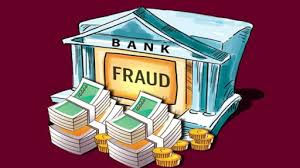Although online transactions have increased significantly over the past few months, banks and payment processors recorded online payment fraud of Rs. 1,750 crores in the seven months ending March 2023.
According to information provided by the Reserve Bank of India, over Rs 800 crore in payment frauds were reported during the fourth quarter that concluded in March 2023. While there were 2.25 lakh transactions involving Rs 333 crore in payment fraud in March, there are no comparable numbers for the same time last year. However, the quantity of fraud is not very large when compared to the volume of transactions utilizing the Internet and mobile apps, but it does highlight the system’s vulnerability, according to officials in the payment sector.
“The new format captures e-commerce transactions, transactions using FASTags, digital bill payments, and card-to-card transfer through ATMs,” the RBI stated. The statistics for card payments (debit and credit cards) and prepaid payment instruments (PPIs) from November 2019 onward may not be comparable with earlier months or periods due to the publication of more detailed data and revisions to data definitions, the RBI warned.
Payment fraud is still a problem, thus the Reserve Bank of India (RBI) transferred the fraud reporting module to DAKSH, its Advanced Supervisory Monitoring System, effective on January 1st of this year. According to Krishnan Chari, Chief Risk Officer, Worldline India, in an interview with The Financial Express, the interdependence of various payment instruments, acquiring bank operations, and payment gateways expose any counterparty’s pay tech methods to a cyber threat and a risk of fraud at the entity level.
A systemic risk management strategy for payment and mediation platforms must be developed under the Basel Committee’s systemic risk framework, even when policymakers issue rules for pay tech companies to follow in terms of scams and mitigating cyber risk. The interconnectedness of banks, non-bank payment processors, payment aggregators, and retail payment settlement systems like NPCI should be taken into account by the national payment systems risk framework.
Fraudsters have been employing cutting-edge techniques to con people, particularly those who are unfamiliar with the technological and financial ecosystem and are new to using digital platforms. Customers were recently alerted by Punjab National Bank to a fresh scam effort by con artists. They claimed that a message encouraging individuals to invest in a plan called “PNB’s 130th Anniversary Government Financial Subsidy” is going across the internet. These emails, according to the banks, are fraudulent, and the PNB bank name is being spread around to commit various forms of fraud.
There are various types of banking fraud that people should know:
ATM card at skimming
The installation of skimming devices in ATMs allows thieves to steal cardholder data. According to a statement made by the RBI, “Fraudsters may also install a dummy keypad or a small, well-hidden pinhole camera to collect ATM PIN.? Occasionally when a consumer enters their PIN into an ATM, scammers posing as nearby customers can access the PIN. Following that, a duplicate card is made using this information, and funds are removed from the customer’s account.
Fraudulent Loans
Taking out a loan is one way to remove money from a bank, a practice that bankers would be more than happy to promote if they knew that the loan would be fully returned with interest. However, a fraudulent loan is one in which the “borrower” is a company run by an untrustworthy bank employee or an accomplice; the “borrower” subsequently files for bankruptcy or disappears, and the money is lost. Even if the borrower doesn’t exist, the loan may just be a ruse to steal a sizable sum of money from the bank.
Wire Fraud
Because a transfer, once done, is difficult or impossible to reverse, wire transfer networks like the international, interbank fund transfer system are alluring as targets. Rapid or overnight wire transfers of large sums of money are common because banks use these networks to settle their accounts with one another. While banks have put checks and balances in place, there is a risk that insiders may try to use fraudulent or forged documents that purport to request that a bank depositor’s money be wired to another bank, frequently an offshore account in some far-off foreign country.
Forged or Fraudulent Documents
Since banks are known for their rigorous money counting, falsified paperwork is frequently used to hide other thefts. Therefore, a thief who wants to hide the small fact that the bank’s money has actually been stolen and is now missing may find value in a document stating that a sum of money has been borrowed as a loan, withdrawn by an individual depositor, transferred, or invested.
In conclusion, the banking and payment sectors as well as the regulatory bodies in India are quite concerned about payment fraud. The RBI’s decision to relocate the fraud reporting module to DAKSH is a positive development. However, additional steps must be done to increase the security of the nation’s financial networks. It entails creating a framework for systemic risk management for payment and settlement systems that take into consideration how various payment methods, acquiring bank operations, and payment gateways are interconnected. People must also be informed about the many sorts of fraud and how to keep secure when conducting online transactions.
(Source – Online Genuine Source including The Times of India, and Indian Express)








